Amazon forest sees new alliance emerge
- Published
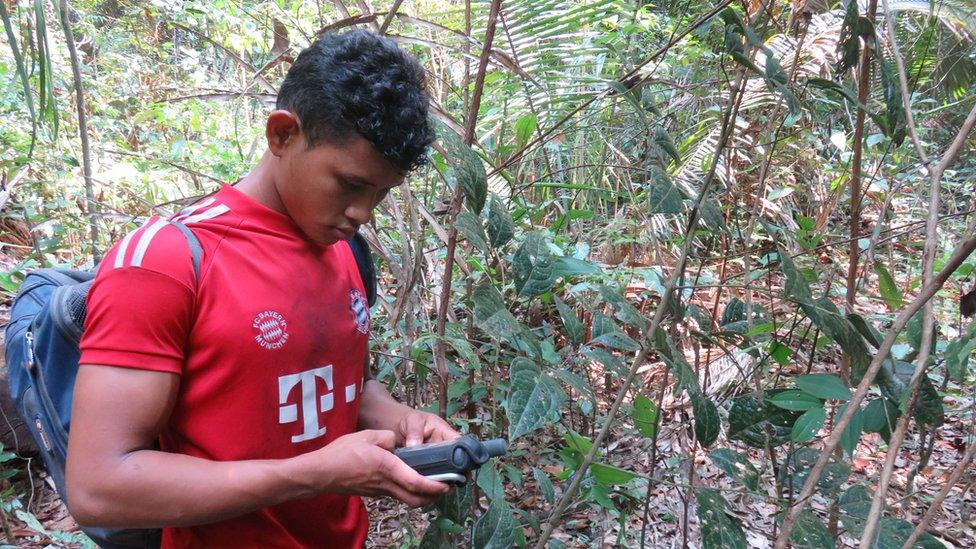
Nelison Saw Munduruku is using a GPS device to help demarcate the land of the Mangabal
"With his device, this young lad is so quick in finding the way through the forest," says an amazed Francisco Firmino da Silva as he observes 17-year-old Nelison Saw Munduruku using a GPS receiver.
Nelison is a member of the Munduruku indigenous group and he is using GPS to make sure the inhabitants of the hamlet of Mangabal mark out their land accurately.
Mr Silva is an old and highly respected inhabitant of Mangabal, which is located along the Tapajos river in the Amazon.
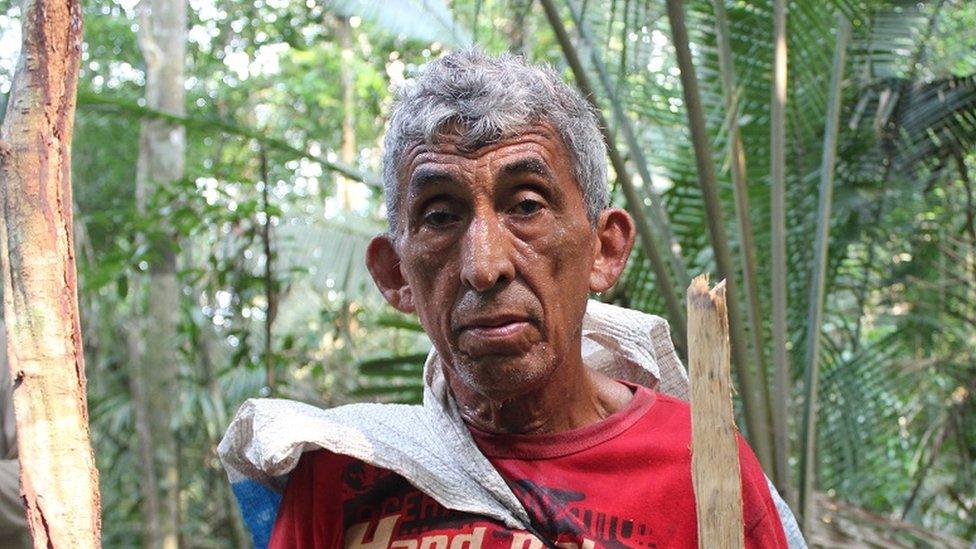
Francisco Firmino da Silva is a highly respected inhabitant of Mangabal
What is remarkable is that Nelison is helping the Munduruku's traditional enemies: the non-indigenous communities set up by rubber-tappers.
It is an example of a new alliance that is being forged, as land comes under increasing pressure from outsiders.
Shared interests
"We both depend on the Tapajos river", says cacique (indigenous leader) Juarez Saw Munduruku. "We are threatened in the same way by the government's big projects, by loggers and by miners."
The Munduruku are repaying an earlier favour, the cacique says.
In 2013 the non-indigenous inhabitants of Mangabal responded to the Munduruku when they called for mobilisation against a new large hydro-dam.
Read: Amazon tribe fights Brazil dam project
The Sao Luiz do Tapajos dam would have flooded indigenous land. The mobilisation was successful and the construction of the dam was suspended, at least for the time being.
A large number of indigenous warriors, 38 Munduruku, two Satere Maue and seven from other groups along the Trombetas river, are now helping the Mangabal community.
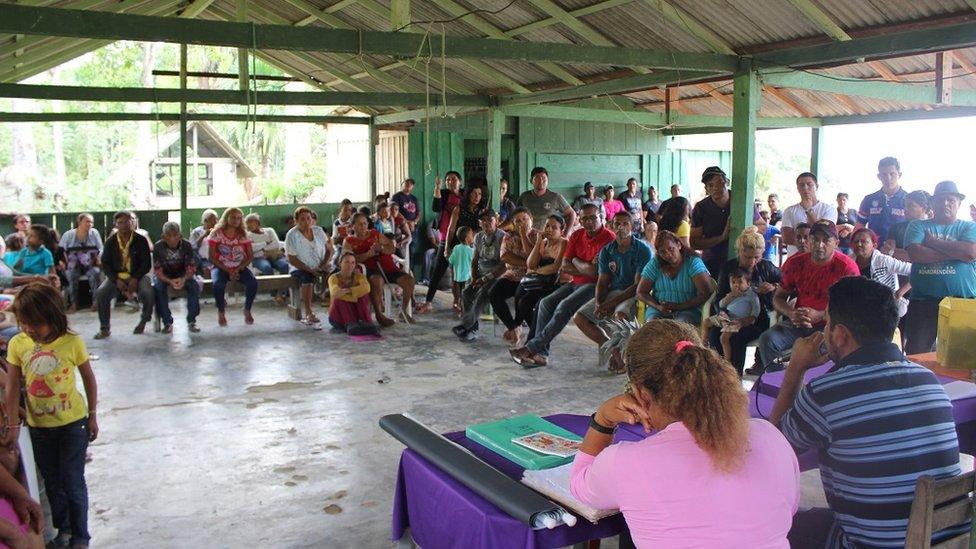
The Mangabal community has received help from indigenous groups
Many undertook long journeys to get there.
After a long struggle, the inhabitants of Mangabal and of the neighbouring community of Montanha won the right to their land in October 2013.
Read: Land victory for Amazon farming community
They became an agro-extractive settlement, which allows them under Brazilian law to exploit the forest in an ecologically friendly way but prevents them from selling their collectively owned land.
Land invasions
The inhabitants of Mangabal need help today because illegal loggers and wildcat miners have invaded their land, which covers 550 sq km.
Incra, the federal agency with responsibility over land reform which administers their settlement, failed to respond to their repeated requests for it to mark out their land.
For months, the inhabitants have been threatened by outsiders, who, waving documents, claim to be the real owners of the land.
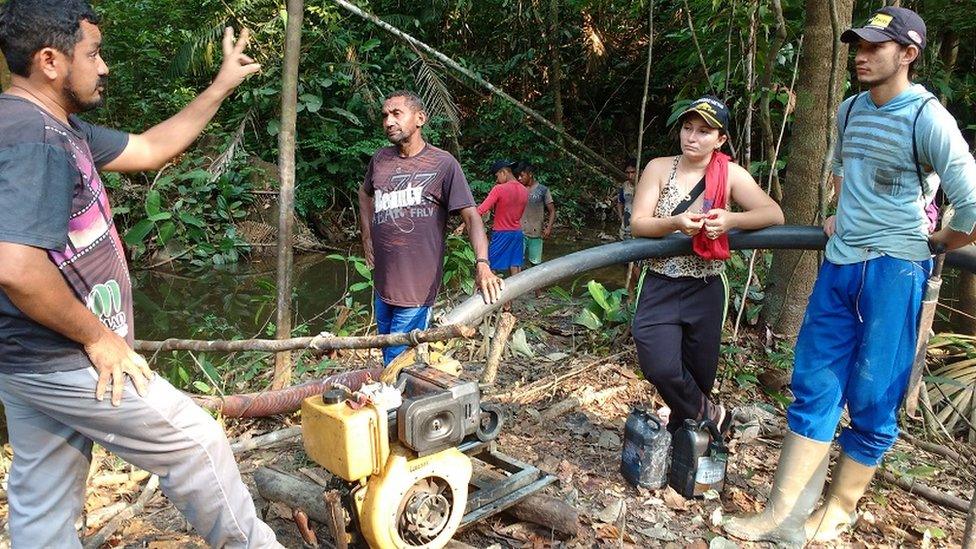
Ageu Pereira (left), the president of the community of Montanha and Mangabal, explains to gold miners that the land belongs to the community
As private ownership is not permitted in the region, that is not possible, but the residents of Mangabal say the outsiders do not listen.
Finally, the inhabitants decided that the only solution was to mark out the land themselves, in a process they call "self-demarcation".
In their first expedition in early September, they marked out 18km (11 miles), and discovered that thieves had felled a large number of palm trees to extract heart of palm.
This product, which the local communities extract sustainably without killing the trees, is an important source of food for the families.
There were also signs that the outsiders were planning to return.
They saw felled trees, waiting to be taken away by loggers, and five rough tracks cut through the forest to the Transamazonica highway located just two kilometres away.
'Keep up the pressure'
Finally, after reports in the press, Mario Sergio da Silva Costa, the superintendent of Incra in the city of Santarem, visited the community on 17 November.
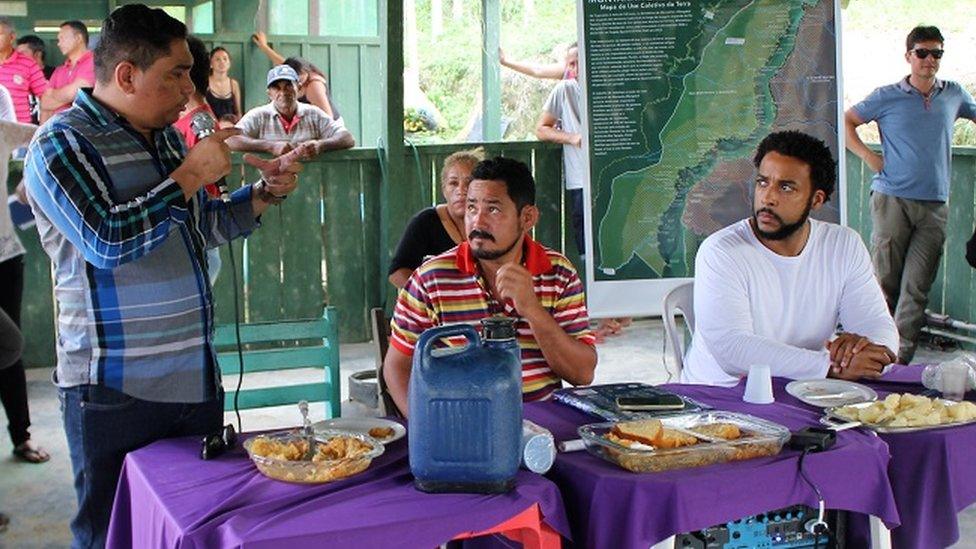
Incra official Mario Sergio da Silva Costa (left) met community leaders in November
He encouraged them to keep up the pressure.
"It's important that you denounce what is happening to all the authorities", he said. "We can then act."
In late November, the community and the indigenous groups carried out their second expedition.
They encountered wildcat gold miners inside their land and tried to explain to them that their titles were not valid.
But the threats against the inhabitants have intensified and the situation is tense.
'A privilege'
Although arduous, the expeditions bring benefits.
"It's a privilege", says Solimar Ferreira dos Anjos. "I'm following the trail my father used, when he went into the forest to tap rubber."
And the community is getting stronger. Youngsters between the age of 13 and 16 are playing a key role, hunting tapirs and boars to feed the group.

Youths are getting involved in the efforts to demarcate the land
Most important of all, however, is the new trust between the indigenous and the non-indigenous population.
"This alliance is becoming very strong", says Ezequiel Lobo, who will lead future expeditions and is being called the "chief warrior" of Mangabal.
"We shall remain with the Munduruku and other indigenous people forever."
The alliance is one of the unexpected results of the influence rural elites are wielding on a federal level in Brazil's Congress.
Since Michel Temer took over the presidency in March 2016, there has been a flurry of initiatives to weaken environmental protection, halt the demarcation of indigenous land and facilitate big projects in the Amazon.
Rural violence has increased. According to Amnesty International, 66 rural activists, small farmers and landless peasants were assassinated in Brazil in 2016, more than in any other country.
Faced with these new threats, old enemies in the Amazon forest are working together.
- Published5 August 2014
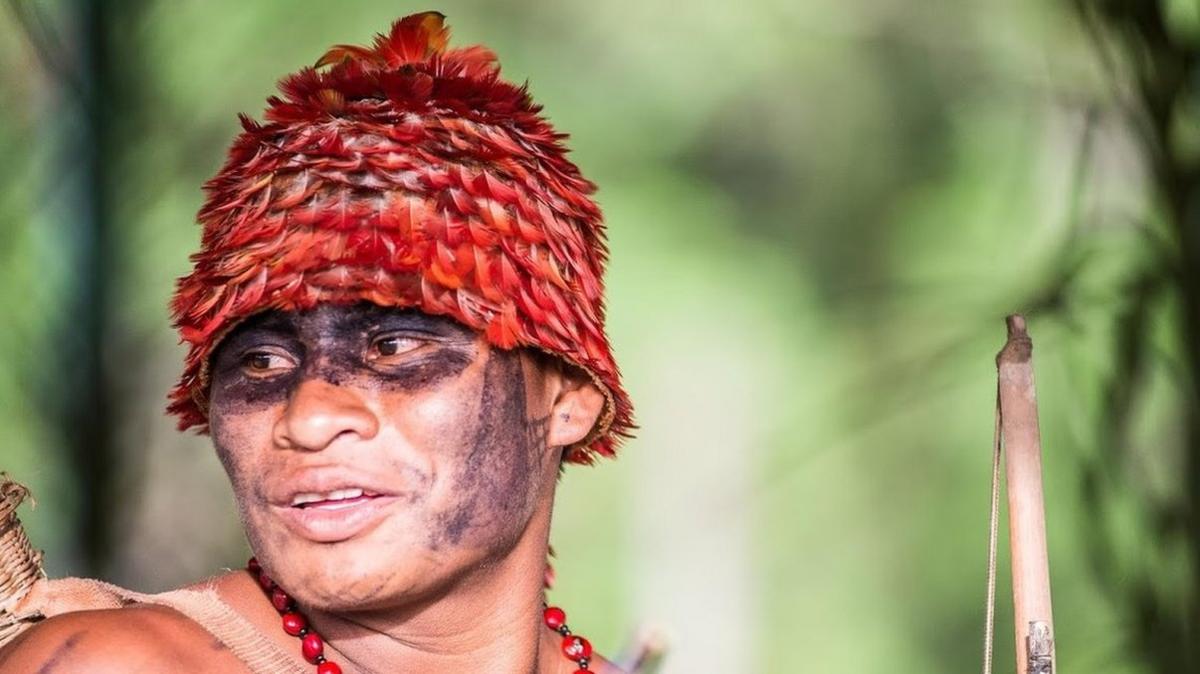
- Published31 October 2013
.jpg)